Will AI Replace Developers? A Balanced Perspective
The rapid advancement of Artificial Intelligence (AI) has brought about profound transformations across a multitude of industries. From diagnosing diseases in healthcare to optimizing supply chains in manufacturing, and from revolutionizing financial forecasting to personalizing education, AI has established itself as a powerful force for enhancing productivity and driving innovation. As AI continues to permeate these domains, one pressing question has begun to resonate louder within the tech community: Will AI replace developers?
The software development industry has already begun to experience the impact of AI. Tools like GitHub Copilot, Tabnine, and ChatGPT are becoming indispensable assets for many developers. These tools are not only capable of assisting with code completion and debugging but also generating entire blocks of code based on contextual input. Their growing sophistication has fueled both excitement and apprehension among developers and stakeholders alike.
On one hand, optimists view AI as a game-changer, capable of automating repetitive tasks and enabling developers to focus on more creative and strategic aspects of their work. On the other hand, skeptics warn that the increasing autonomy of AI tools could lead to the gradual erosion of developer roles, particularly those at the entry level or involving routine tasks.
This debate is not without precedent. Throughout history, technological advancements have repeatedly disrupted industries and raised fears of widespread job displacement. Yet, in most cases, new technologies have also created opportunities for innovation, skill development, and economic growth. Will the same hold true for developers in the age of AI, or is this disruption of a fundamentally different nature?
This article seeks to address this pivotal question from a balanced perspective. It delves into the current capabilities of AI in programming, highlighting its strengths in automating repetitive tasks and streamlining workflows. At the same time, it examines the limitations that prevent AI from fully replacing human developers, such as its lack of creativity, contextual understanding, and the ability to tackle complex, abstract problems.
Furthermore, this article explores how developers can adapt to an AI-driven future. It considers the new roles and opportunities that AI might create, such as AI trainers, system architects, and innovation specialists. It also underscores the importance of continuous learning, creativity, and the cultivation of skills that complement AI rather than compete with it.
Ultimately, the discussion centers not on whether developers will be replaced by AI, but on how the evolving relationship between developers and AI will redefine the software development landscape. Will it be a partnership that enhances human creativity and productivity, or will it lead to a shift where the human role diminishes in significance? Let’s explore these possibilities and chart a course for navigating the future of development in an AI-powered world.
The Current Role of AI in Software Development
Artificial Intelligence (AI) has evolved from a futuristic concept to a practical and indispensable component of software engineering. Developers today rely on AI-driven tools not only for writing code but also for optimizing the software development lifecycle. Whether used as coding assistants, debugging tools, or sophisticated analytics systems, AI has firmly established itself as a valuable ally in the world of programming.
AI-Powered Tools and Platforms
The integration of AI into development workflows is largely driven by a suite of innovative tools and platforms. These tools span various stages of development, from ideation to deployment, and have significantly transformed how developers approach their work.
- GitHub Copilot: A flagship tool powered by OpenAI’s Codex, GitHub Copilot suggests code snippets in real time, often capable of generating entire functions based on comments or partially written code. Its ability to contextualize user input makes it a favorite among developers for tasks ranging from boilerplate code generation to complex algorithm suggestions.
- Tabnine: Tabnine builds on deep learning models to predict and auto-complete lines of code, offering language-specific recommendations and supporting a wide variety of programming languages. Its efficiency in handling both small tasks and large-scale codebases makes it a versatile assistant.
- ChatGPT: Known for its conversational capabilities, ChatGPT has become a go-to tool for developers seeking help with debugging, syntax clarification, or understanding new programming concepts. By bridging the gap between human intent and machine output, it acts as both a coding assistant and a mentor.
- DeepCode (now part of Snyk): This tool specializes in analyzing codebases for potential vulnerabilities and compliance issues. By providing actionable insights, DeepCode ensures higher-quality code and reduces the risk of introducing security flaws into applications.
These platforms are just a glimpse into the broader ecosystem of AI tools reshaping the development landscape.
Benefits of AI in Development
The integration of AI into software development workflows offers a range of benefits that improve efficiency, accuracy, and accessibility for developers:
- Efficiency Gains: AI tools streamline mundane and repetitive tasks. For instance, generating boilerplate code, performing static code analysis, or writing basic test cases are now quicker and more efficient, allowing developers to focus on more strategic work.
- Error Reduction: Real-time suggestions and automated testing powered by AI can flag inconsistencies, syntax errors, and vulnerabilities during development. This proactive approach saves valuable time during debugging and reduces post-deployment issues.
- Learning Acceleration: AI tools provide on-demand learning opportunities, particularly for junior developers. They can explain complex programming concepts, offer guidance on best practices, and provide examples in unfamiliar languages or frameworks.
- Enhanced Collaboration: AI tools facilitate collaboration within teams by ensuring coding standards are followed and providing consistent quality across projects.
Real-Life Use Cases
AI’s impact on software development is evident in its application across various use cases, including:
- Improved Code Review Processes: Platforms like Codacy and SonarQube automate code reviews, ensuring adherence to coding standards, identifying technical debt, and highlighting areas for improvement. These tools enhance productivity and consistency in large-scale development teams.
- Automated Testing: Tools such as Testim.io and Applitools leverage AI to create, run, and maintain automated tests. This reduces the time and effort required for quality assurance, allowing teams to deploy robust applications faster.
- Smart Prototyping: Startups and small teams benefit from AI’s ability to rapidly prototype applications. By using AI to generate the foundational structure of an app, developers can allocate more resources toward refining features and improving user experience.
- Natural Language Querying: Tools like Codex-integrated systems allow developers to query databases, generate code snippets, or automate tasks using plain English. This lowers the barrier to entry for non-programmers who wish to contribute to software development projects.
- Continuous Integration and Deployment (CI/CD): AI-powered platforms like CircleCI and Jenkins X optimize build pipelines, predict failures, and recommend improvements to deployment processes.
AI’s Current Limitations
Despite these advancements, the capabilities of AI tools are not without their flaws. While AI excels in efficiency and assistance, it cannot replace the creative, problem-solving, and strategic thinking that developers bring to the table. Its reliance on historical data means it often struggles to:
- Address novel problems that lack prior patterns or data.
- Provide accurate suggestions for codebases with unique architectures.
- Understand the broader business or user context behind technical decisions.
These limitations underscore the fact that while AI is a powerful assistant, it is not yet capable of functioning independently in complex development scenarios.
The Limitations of AI in Programming
AI’s integration into software development has brought remarkable advancements, but its potential is still bound by certain critical limitations. These constraints underscore the irreplaceable value of human expertise in areas where creativity, contextual understanding, and strategic problem-solving are essential.
Creativity and Innovation Gaps
Programming is more than just writing code—it is a creative and problem-solving endeavor. Developers often need to think outside the box, crafting unique solutions to complex challenges. While AI is exceptional at identifying and reproducing patterns within existing data, it falters in situations requiring original thought or innovative approaches.
Key areas where AI struggles with creativity include:
- Crafting Innovative Algorithms: AI can generate standard algorithms, like sorting or searching, but lacks the ability to devise new methods tailored to specific, unstructured challenges. For instance, optimizing data retrieval for a never-before-seen database structure or designing a novel compression algorithm requires ingenuity that AI cannot replicate.
- Designing Systems with Human-Centric Focus: Building applications that prioritize user experience demands an understanding of human behavior, emotions, and preferences. AI lacks the nuanced insight needed to design interfaces or systems that deeply resonate with end users.
A real-world example of this limitation is the creation of intuitive user interfaces (UI) for accessibility. While AI can suggest design elements based on existing patterns, envisioning and implementing a revolutionary approach to enhance accessibility still requires human creativity.
Contextual Understanding
AI relies heavily on the data it has been trained on and the immediate context provided by user inputs. While this enables it to perform specific tasks, it often lacks the broader, deep understanding required to navigate multifaceted projects.
Some areas where AI’s contextual understanding falls short include:
- Project Objectives: Aligning technical decisions with overarching business goals requires a grasp of long-term vision, market dynamics, and customer needs. For example, determining the trade-offs between cost, scalability, and performance in a cloud deployment strategy is not something current AI tools can effectively analyze in a business context.
- Team Dynamics: Collaboration in software development often involves navigating complex interpersonal and professional dynamics within a team. AI cannot effectively engage in brainstorming sessions, negotiate compromises, or understand unspoken expectations among team members.
- Cultural Nuances: When developing applications for global audiences, tailoring features to specific cultural or regional needs requires an understanding of societal norms, language, and user expectations. AI lacks this ability, often defaulting to generic solutions that may fail to resonate with specific audiences.
For instance, a healthcare app targeting patients in different countries might need to accommodate diverse privacy laws, medical terminologies, and user behaviors. AI can automate parts of this process but cannot replace the human expertise required to ensure cultural and legal alignment.
Debugging Complex Systems
Debugging is a critical component of software development and requires a holistic understanding of the entire system, including its architecture, dependencies, and real-world interactions. While AI excels at identifying patterns that may indicate errors, it struggles to:
- Pinpoint Root Causes in Multi-Layered Systems: Modern software systems often comprise interconnected components, such as microservices, databases, and third-party APIs. Diagnosing an issue that spans multiple layers—such as a mismatch between a frontend request and a backend response—is beyond the current capabilities of AI.
- Propose Holistic Solutions: Resolving a bug often involves balancing multiple trade-offs, such as performance, security, and maintainability. AI may suggest fixes based on existing patterns, but these solutions often lack the context necessary to align with the system’s broader objectives.
A good example of AI’s limitations in debugging is its inability to effectively address concurrency issues, such as race conditions. These problems are inherently complex and often require a deep understanding of the timing and synchronization between processes—something AI tools are ill-equipped to manage.
Ethical and Regulatory Considerations
AI’s limitations are not confined to technical challenges; ethical and regulatory issues also play a significant role. For example:
- Bias in Recommendations: AI tools trained on biased data can perpetuate inaccuracies or discriminatory practices in code suggestions.
- Legal Compliance: Developers often need to ensure their software adheres to regulations like GDPR or HIPAA, tasks that require nuanced judgment beyond AI’s capabilities.
In such scenarios, human developers are indispensable for interpreting ethical dilemmas and navigating regulatory frameworks.
Why Human Expertise Remains Essential
The limitations of AI highlight the indispensable role of human developers in the software development process. While AI can automate routine tasks and offer valuable support, it is ultimately a tool that works best in collaboration with human ingenuity, not as a replacement for it. Developers bring critical skills to the table, including:
- Creativity in crafting original solutions.
- Strategic thinking for aligning technical decisions with broader goals.
- Empathy for understanding and meeting user needs.
- Ethical reasoning to navigate complex social and legal considerations.
As AI continues to evolve, it will likely complement human expertise in increasingly sophisticated ways. However, the limitations outlined above ensure that developers will remain central to the future of programming for the foreseeable future.
Will AI Erode Developer Jobs?
The question of whether AI will erode developer jobs is a pressing one, fueled by rapid advancements in automation and AI-powered tools. While concerns about job displacement are valid, history shows that technology often reshapes the job market rather than eliminating it outright. By examining these fears, drawing lessons from past technological shifts, and analyzing the evolving role of developers, we can better understand the future of programming in an AI-driven world.
Understanding the Fear
The fear of AI replacing developers stems from its impressive ability to automate tasks traditionally performed by humans. Tools like GitHub Copilot and ChatGPT have demonstrated that AI can generate code snippets, debug errors, and even provide recommendations for best practices. This has led many to worry that as these tools become more advanced, the need for human developers may diminish.
However, such concerns are not new. Every major technological breakthrough in history has sparked similar anxieties, only to later reveal a more nuanced impact on the workforce.
A Historical Perspective
Looking back, we can see how past technological revolutions initially displaced jobs but ultimately created new opportunities and industries:
- The Industrial Revolution:
- Mechanization replaced many manual labor roles in agriculture and manufacturing.
- However, it also gave rise to new professions in engineering, machine maintenance, logistics, and factory management.
- For example, while traditional weavers lost jobs to automated looms, demand for machinists and textile engineers increased.
- The Internet Era:
- The rise of the internet disrupted traditional media, such as newspapers and magazines.
- In its place, new roles emerged in web development, digital marketing, SEO, and cybersecurity.
- Entire industries, such as e-commerce and social media, were born, creating millions of jobs that did not previously exist.
Similarly, in software development, AI might automate entry-level tasks such as writing simple scripts or performing static code analysis. However, it will also create opportunities in areas requiring more advanced skills and creativity, much like previous technological shifts.
Changing Roles in Development
Rather than replacing developers, AI is likely to transform their roles. As routine and repetitive tasks are automated, developers will transition to positions that emphasize creativity, strategic thinking, and oversight.
- AI Trainers:
- Developers will play a critical role in training AI models, refining algorithms, and curating high-quality datasets.
- For example, training an AI to recognize edge cases or ethical concerns in software requires human judgment and expertise.
- System Architects:
- While AI can suggest code snippets or optimize existing architectures, designing complex, scalable, and secure systems will remain a uniquely human responsibility.
- Developers will focus on creating blueprints for integrating AI into broader ecosystems.
- Innovation Specialists:
- Developers will specialize in integrating AI into unique, domain-specific solutions.
- For instance, creating AI tools tailored to industries like agriculture, entertainment, or legal services requires expertise that combines technical knowledge with industry insights.
- Ethical Oversight and Compliance Roles:
- As AI adoption grows, so will the need for developers who can ensure compliance with data protection laws, ethical AI use, and industry regulations.
By adapting to these new roles, developers will remain essential in shaping the future of technology.
Industries That May See Rapid Shifts
While all sectors are likely to experience some impact from AI, certain industries are particularly poised for rapid AI adoption due to the nature of their workflows and the prevalence of well-structured, repeatable tasks.
- E-commerce:
- AI is already revolutionizing inventory management, recommendation systems, and customer service chatbots.
- Developers in this industry may focus on creating personalized shopping experiences, optimizing logistics, and enhancing AI-driven marketing strategies.
- Healthcare:
- AI is transforming medical software, with applications ranging from diagnostic tools to patient management systems.
- Developers in this sector will be needed to build reliable, accurate, and secure systems tailored to healthcare providers’ and patients’ unique needs.
- Finance:
- AI excels at tasks like fraud detection, predictive analytics, and automated trading.
- Developers in finance may focus on enhancing these systems, integrating regulatory compliance, and ensuring data privacy.
- Education:
- Adaptive learning platforms powered by AI are reshaping how students engage with educational content.
- Developers will be needed to create tools that personalize learning experiences and support diverse educational needs.
- Transportation and Logistics:
- Autonomous vehicles, route optimization, and supply chain management are being transformed by AI.
- Developers in this sector will play a key role in improving these systems, ensuring safety, and addressing edge cases.
The Human Touch: Why Developers Are Irreplaceable
Despite AI’s growing capabilities, certain aspects of software development remain distinctly human:
- Creativity: Building innovative solutions, designing user-centric interfaces, and imagining new possibilities require human ingenuity.
- Strategic Thinking: Aligning technical decisions with business goals, long-term planning, and managing resources are tasks beyond AI’s scope.
- Collaboration: Effective communication, teamwork, and the ability to mediate between technical and non-technical stakeholders are essential developer skills.
- Ethics and Empathy: Navigating ethical dilemmas, understanding user pain points, and ensuring equitable AI use are uniquely human responsibilities.
Rather than eroding developer jobs, AI is poised to reshape the profession, automating routine tasks while creating opportunities for more strategic, creative, and specialized roles. As developers adapt to these changes, they will not only secure their relevance but also play a pivotal role in guiding the ethical and innovative use of AI.
History has shown that every technological advancement brings both disruption and opportunity. Developers who embrace this transformation, continuously upskill, and find ways to collaborate effectively with AI will thrive in this evolving landscape. The future of programming is not a story of replacement but of partnership between human ingenuity and machine efficiency.
What Developers Can Do to Stay Relevant
The rise of AI in software development poses challenges, but it also presents opportunities for developers willing to adapt. By focusing on continuous learning, expanding their skill sets, and embracing collaborative approaches, developers can ensure they remain indispensable in an AI-enhanced future.
Embrace Lifelong Learning
In the fast-paced world of technology, staying relevant requires a commitment to continuous education and skill enhancement. Developers must proactively adapt to emerging trends and tools to maintain their edge.
- Stay Informed:
- Regularly follow advancements in AI, software development, and related fields.
- Subscribe to industry blogs, attend webinars, and join professional communities to stay updated on the latest tools and best practices.
- Example platforms: GitHub, Medium, Stack Overflow, and LinkedIn Learning.
- Learn New Frameworks and Languages:
- Master emerging tools and programming languages that align with AI-driven workflows, such as Python, R, or frameworks like TensorFlow and PyTorch.
- Stay agile in adopting new paradigms, such as serverless computing or edge computing.
- Participate in Certifications and Courses:
- Invest in certifications for specialized skills like AI/ML, DevOps, or cloud computing.
- Platforms like Coursera, Udemy, and edX offer in-depth courses tailored to emerging technologies.
Lifelong learning ensures that developers not only stay relevant but also position themselves as leaders in adapting to technological shifts.
Build Complementary Skills
AI might automate coding tasks, but it cannot replicate the broader expertise developers bring to the table. Expanding into complementary areas strengthens a developer’s profile and allows them to tackle roles that integrate technical and non-technical skills.
- UX Design:
- Learn the principles of user-centered design to create applications that resonate with users.
- Tools like Figma and Adobe XD can help developers gain proficiency in designing intuitive interfaces.
- Project Management:
- Develop skills to manage teams, timelines, and resources effectively.
- Certifications like PMP (Project Management Professional) or familiarity with Agile and Scrum methodologies can boost career prospects.
- Data Science and Analytics:
- Dive into data science to harness insights from AI-generated data and drive decision-making.
- Skills in data visualization tools like Tableau and Power BI are increasingly in demand.
By building complementary skills, developers can bridge the gap between coding and broader business or user-focused goals.
Specialize in High-Demand Niches
As routine tasks become automated, focusing on specialized, high-impact areas can help developers remain indispensable. Human creativity, critical thinking, and domain-specific expertise are irreplaceable in these fields.
- Cybersecurity:
- As technology evolves, so do security threats. Developers skilled in identifying vulnerabilities and implementing robust security measures will be in high demand.
- Specialize in areas like ethical hacking, cryptography, and secure software development.
- Artificial Intelligence (AI):
- Developers can shift from using AI as a tool to designing and implementing AI solutions themselves.
- Specializations like natural language processing (NLP), computer vision, and reinforcement learning present significant opportunities.
- Augmented Reality (AR) and Virtual Reality (VR):
- With the rise of immersive technologies, developers who can build AR/VR applications for industries like gaming, education, and healthcare will find unique opportunities.
Focusing on niches where AI serves as an enabler, rather than a replacement, allows developers to leverage their expertise in groundbreaking areas.
Foster Collaboration
In an AI-augmented environment, collaboration will be as important as technical skills. Developers must strengthen their ability to work seamlessly with cross-functional teams, stakeholders, and AI systems.
- Effective Communication:
- Clearly articulate technical ideas to non-technical team members, stakeholders, or clients.
- Practice active listening to understand team priorities and user needs.
- Problem-Solving in Multidisciplinary Environments:
- Work with professionals from diverse fields, such as marketing, design, and business, to create well-rounded solutions.
- AI tools will increasingly serve as collaborators, and developers must learn how to guide and evaluate their outputs.
- Adaptability to New Workflows:
- Embrace changes in project management and development workflows driven by AI integration.
- Be open to learning new tools and methods that optimize productivity.
By fostering collaboration, developers can amplify their value as team players and adapt to evolving roles where teamwork and communication are critical.
The Mindset for Future Success
In addition to technical and collaborative skills, developers must cultivate a growth mindset. This means:
- Viewing AI as a tool to augment their work, not as a threat.
- Remaining curious and open to exploring new disciplines and challenges.
- Building resilience to navigate a dynamic, ever-changing industry.
AI will undoubtedly change the landscape of software development, but developers who embrace these changes and proactively adapt will not only remain relevant but thrive. By committing to lifelong learning, acquiring complementary skills, specializing in high-demand areas, and fostering collaboration, developers can secure their place in an AI-enhanced world.
The future belongs to those who see change not as a barrier but as an opportunity to grow, innovate, and lead.
A Future of Collaboration, Not Replacement
The emergence of AI in software development doesn’t spell the end of human developers—it signifies a transformation in their roles. Rather than replacing developers, AI will augment their capabilities, enabling a synergistic relationship that combines human creativity and judgment with machine efficiency and precision. Together, they will shape a future where innovation and productivity reach new heights.
AI Handles Repetition
AI excels at automating repetitive, time-consuming tasks, allowing developers to focus on more complex and creative aspects of their work. For example:
- Code Generation: AI tools can produce boilerplate code, template-based solutions, and even entire functions from simple prompts.
- Testing and Debugging: Automated testing tools powered by AI can identify bugs, detect inconsistencies, and even suggest fixes in real-time.
- Code Optimization: AI algorithms can recommend performance enhancements, such as reducing execution time or optimizing resource usage.
This delegation of repetitive tasks enhances efficiency, reduces errors, and ensures a smoother development lifecycle.
Humans Drive Innovation
While AI handles the predictable and routine, developers will focus on tasks that require human ingenuity, such as:
- Strategic Thinking: Aligning software solutions with broader business goals, user needs, and industry trends.
- Creative Problem-Solving: Designing novel algorithms, architectures, and user experiences tailored to unique challenges.
- Ethical Decision-Making: Ensuring that AI-driven systems comply with ethical standards, privacy regulations, and cultural sensitivities.
Human developers remain indispensable for creating software that is not only functional but also meaningful, intuitive, and impactful.
The Developer-AI Workflow of the Future
In this collaborative paradigm, AI will serve as an intelligent assistant, seamlessly integrating into the developer’s workflow. Here’s what a typical software project might look like:
- Initial Planning and Ideation:
- Developers define project goals, gather requirements, and outline system architecture.
- AI analyzes similar projects or datasets to suggest efficient starting points.
- Code Drafting:
- AI tools like GitHub Copilot or Tabnine draft the initial code structure based on natural language prompts or high-level specifications.
- This could include generating functions, setting up APIs, or designing database schemas.
- Human Refinement:
- Developers review, refine, and expand the AI-generated code to incorporate unique business logic, optimize algorithms, and ensure maintainability.
- Creativity and domain expertise come into play here, adding a human touch that AI cannot replicate.
- Automated Testing and Debugging:
- AI-powered tools like DeepCode or Testim.io run extensive tests to identify vulnerabilities, performance bottlenecks, or potential compatibility issues.
- Developers oversee the process, validating AI findings and making critical adjustments.
- Deployment and Monitoring:
- AI automates parts of the deployment process, such as containerization or cloud scaling.
- Developers monitor performance, analyze AI-driven insights, and make improvements to ensure scalability and reliability.
- Iteration and Maintenance:
- AI assists in identifying trends, user feedback, and areas for improvement.
- Developers implement updates, enhance features, and maintain system integrity over time.
This workflow illustrates how humans and AI can coexist harmoniously, each playing to their strengths.
The Benefits of Collaboration
By leveraging this collaborative model, developers and organizations can achieve:
- Increased Productivity: AI reduces the time spent on repetitive tasks, enabling faster project completion.
- Improved Code Quality: With AI flagging issues early, the final product is more robust and reliable.
- Greater Innovation: Freed from routine tasks, developers can dedicate more time to creative and strategic pursuits.
- Cost Efficiency: Streamlined workflows reduce development costs while maintaining high standards.
Developers at the Helm
Despite AI’s growing capabilities, human developers will remain the driving force behind software innovation. AI lacks the intuition, empathy, and contextual understanding necessary to design systems that resonate with end users and align with complex business goals.
In the future, developers will act as:
- Orchestrators: Guiding AI tools to achieve specific outcomes.
- Quality Controllers: Ensuring that AI-generated solutions meet high standards of usability and ethics.
- Visionaries: Pioneering new technologies and applications that redefine industries.
The future of software development is not about AI replacing developers but about creating a partnership where both entities complement each other’s strengths. AI will handle the heavy lifting of repetitive tasks, while developers will continue to lead innovation, solve complex problems, and ensure that technology serves humanity’s best interests.
This collaborative model holds immense potential for transforming the way software is built, setting the stage for a more efficient, creative, and impactful tech industry. By embracing this partnership, developers can secure their place in a rapidly evolving world and shape the future of technology.
Conclusion
AI has undoubtedly transformed the software development landscape, making developers more efficient and productive. However, it remains a tool—a powerful one, but a tool nonetheless. Its limitations in creativity, contextual understanding, and complex problem-solving ensure that developers will continue to play an essential role in shaping the future of technology.
The key is not to fear AI but to embrace it. By evolving alongside AI, developers can unlock new opportunities, redefine their roles, and push the boundaries of what’s possible in software development.
In this journey, the question is not whether AI will replace developers but how developers and AI can work together to build a brighter, more innovative future.

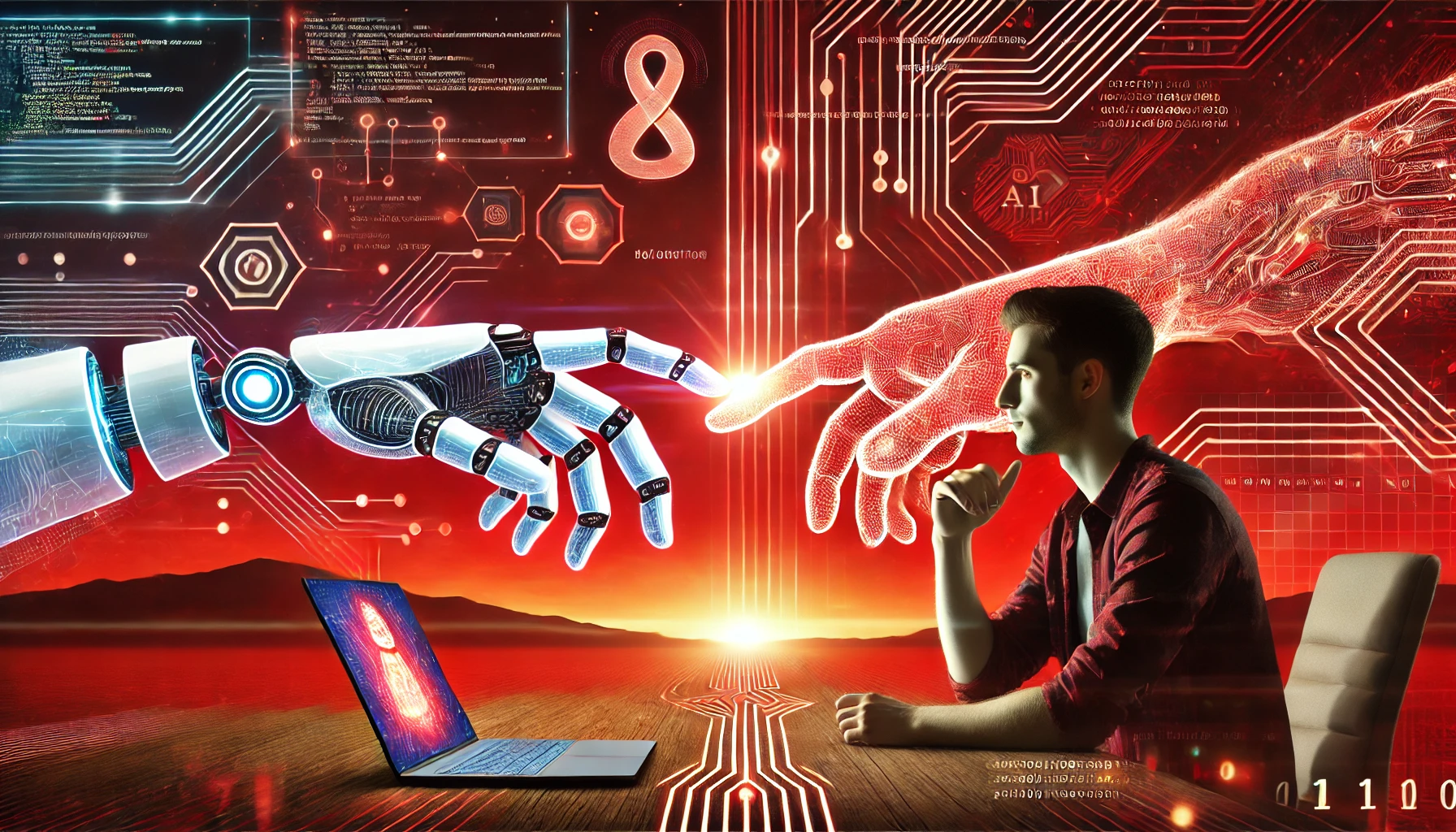





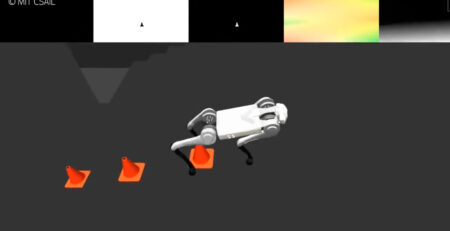
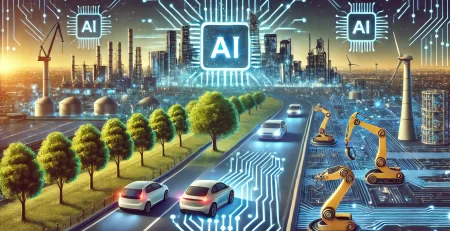

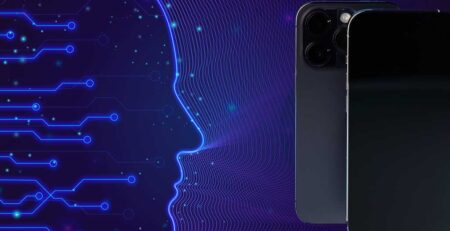
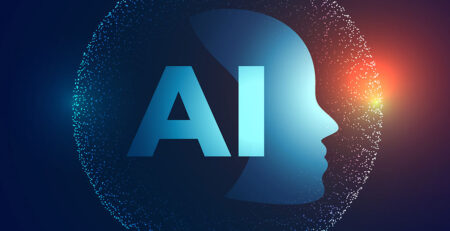
Leave a Reply